Filling your home with plant life is a wonderful way to increase the aesthetic of the home, boost your mood, and cleanse the air from toxins.
What's not to love about that? The natural colors and textures that indoor trees bring are unparalleled.
If you have a black thumb and can't seem to keep your plants alive, we have an awesome solution for you.
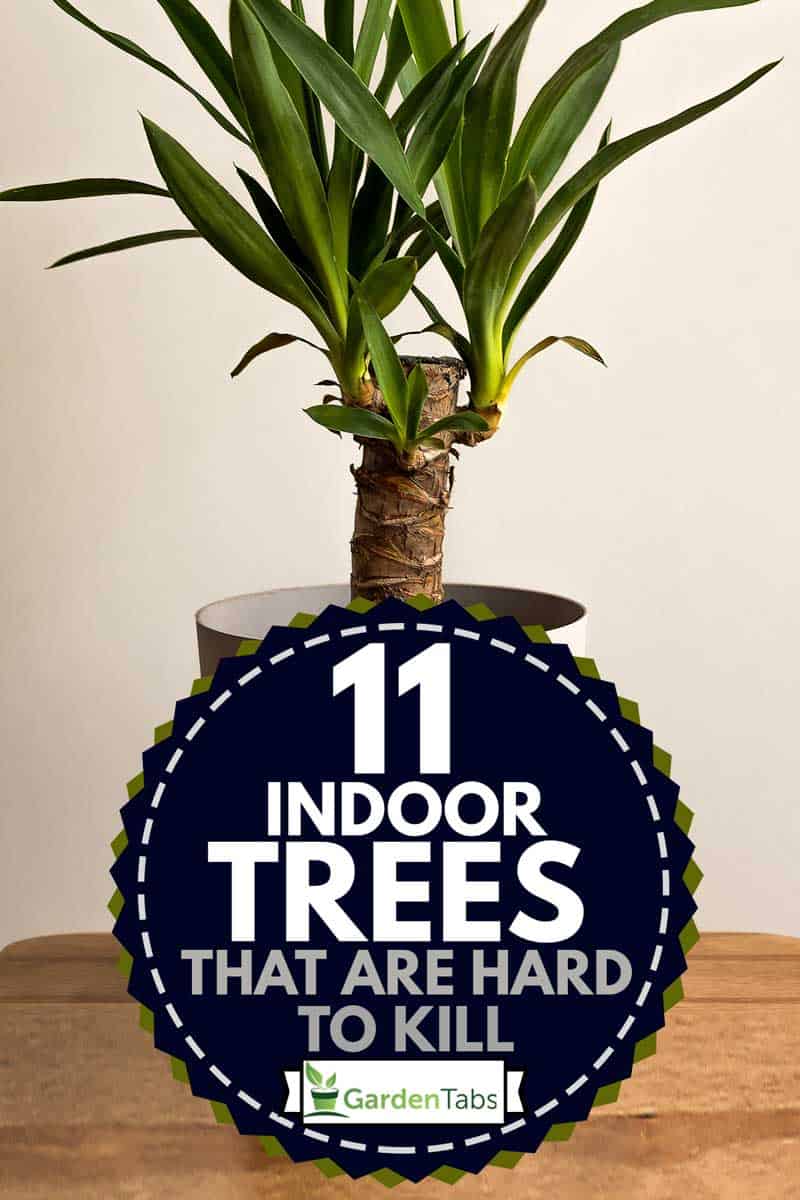
These 11 indoor trees are very hard to kill.
So whether you're searching for some easy-care plants or simply want to bring more life to your indoor space, we have the plants for you.
Continue reading to find out more about these awesome plants!
1. Miniature Olive Tree
The Miniature Olive Tree, scientifically known as Olea europaea, is a charming indoor tree that produces small olive fruits.
Miniature Olive Trees thrive in bright, direct sunlight. Place your tree near a south-facing or west-facing window where it can receive at least 6-8 hours of direct sunlight daily.
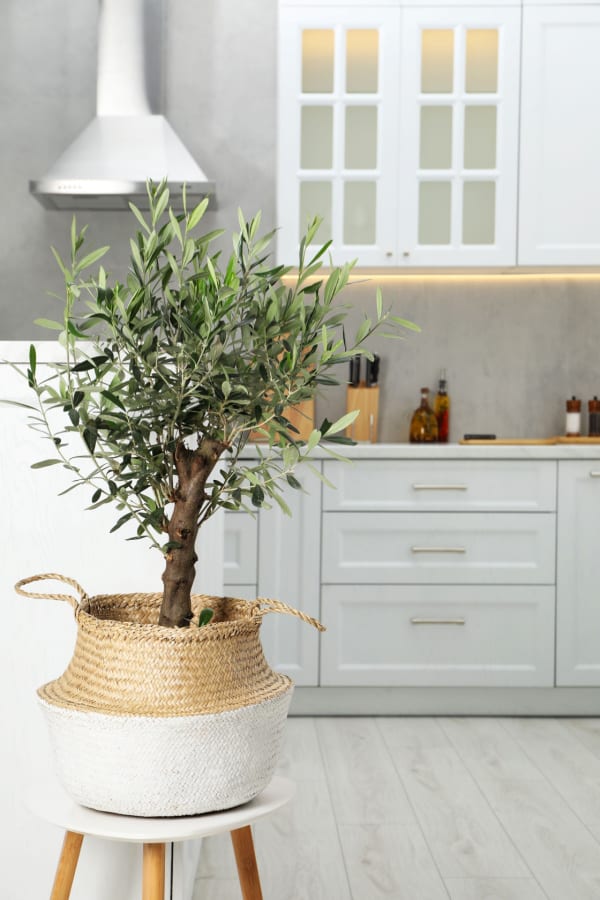
Plant your Miniature Olive Tree in well-draining, sandy soil. Olive trees prefer to dry out slightly between waterings. Water your tree thoroughly when the top 2 inches of soil are dry to the touch.
It's a unique and attractive addition to your indoor garden.
2. Fiddle Leaf Fig
Chances are you've already heard the name of this incredible indoor tree. Its long spindly trunk branches out to house large, fiddle-shaped leaves.
The glossy foliage ranges from dark to vibrant green and looks absolutely stunning.
If properly cared for, the tree can grow a few feet each year. Its botanical name is Ficus lyrata.
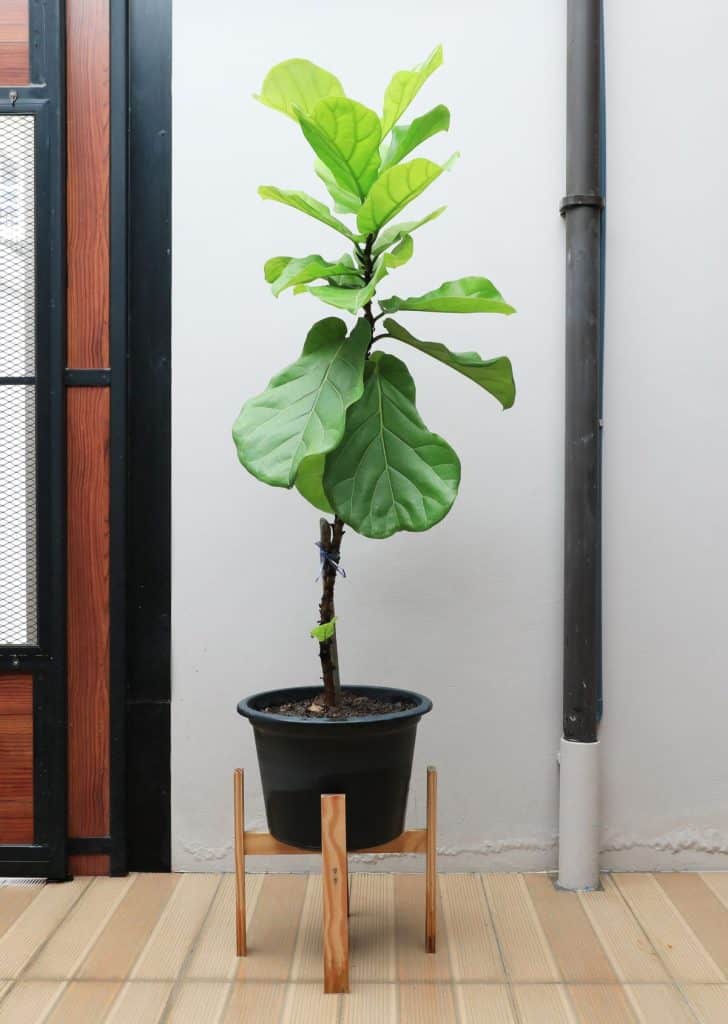
Find a spot in your home that receives bright, filtered sunlight. Water the tree deeply in each watering, allowing the top inch or so of soil dry out between waterings.
The tree prefers a warm, semi-humid spot if possible. Use a soil that's well-draining.
Occasionally use a rag to wipe the dust off its leaves for optimal plant health.
Enjoy the unique look of the fiddle-shaped leaves and how it boosts the look of your home.
3. Ficus
The ficus tree is a long-time indoor favorite amongst plant enthusiasts. The tree has a single trunk with an expansive canopy of foliage.
Their leaves are ovate in shape and range in green hues. Its botanical name is Ficus benjamina.
Bright indirect or filtered light is optimal for the ficus tree. Keep the tree in a spot that has a constant temperature over 60 degrees Fahrenheit.
You can mist its leaves since it does well in a humid environment. Water the plant when the first inch of soil is dried out.
The ficus tree likes to stay in one spot. So position it in a place where it can stay put for a long time.
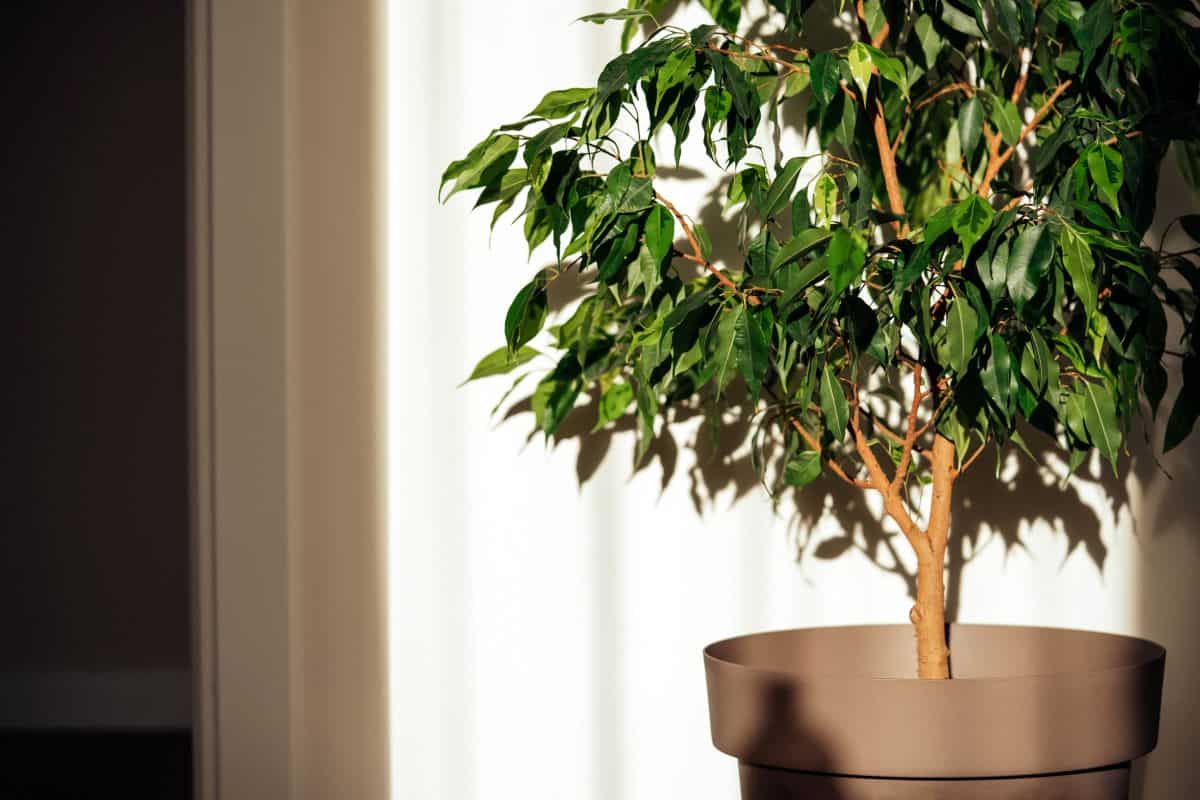
Give your guests a warm greeting by positioning a ficus tree next to the door.
4. Rubber Tree
Indoors, the rubber tree can reach a height between 6 and 10 feet. So pick a spot that can support its height!
There is a variety of rubber trees, each one's leaves looking slightly different. Its leaves can be glossy green, solid-colored, variegated with yellow, accented with burgundy streaks, and more. Its botanical name is Ficus elastica.
The natural burgundy hues found in some rubber tree varieties are truly captivating.

Place your rubber tree in a place that receives bright, filtered sunlight. The soil should be kept moist, but ensure that it's well-draining.
5. Lemon tree
The lemon tree, scientifically known as Citrus limon, is a delightful indoor tree that can produce small citrus fruits.
Its glossy green leaves and occasional bursts of fragrant white blossoms make it not only a practical choice for homegrown lemons but also a decorative and aromatic addition to your home.
Lemon trees thrive in bright, direct sunlight. Place your lemon tree near a south-facing window where it can receive at least 8 hours of sunlight per day.
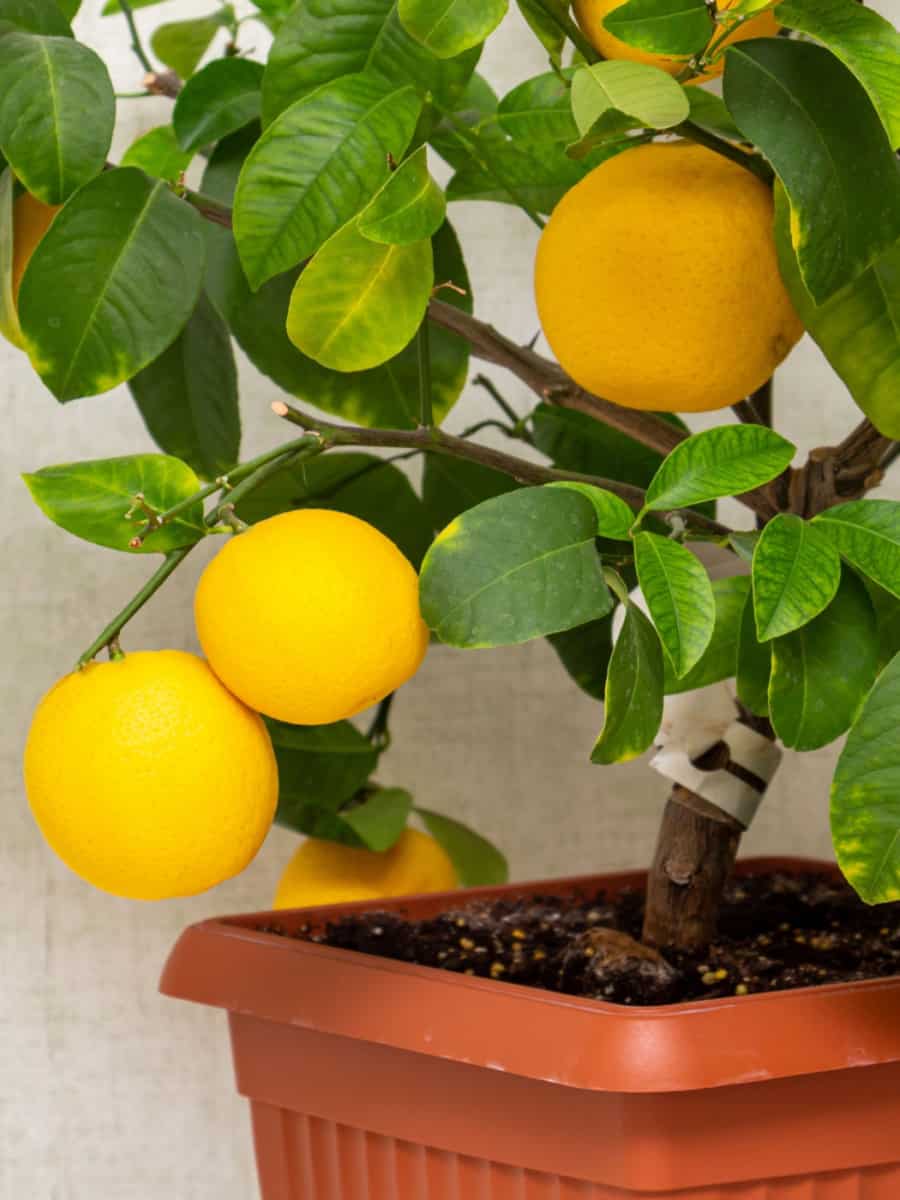
Plant your lemon tree in well-draining, acidic soil. Ensure the pot has good drainage to prevent root rot.
Keep the soil consistently moist but not waterlogged. Water your lemon tree when the top inch of soil feels slightly dry to the touch.
6. Yucca
Yuccas are well-recognized for their long, pointed leaves that provide a very unique aesthetic.
There's great variation in the coloration of yucca leaves: from green to almost blue, and variegated with splashes of white, yellow, and cream.
The blades extend from woody canes. Its botanical name is Yucca elephantipes.
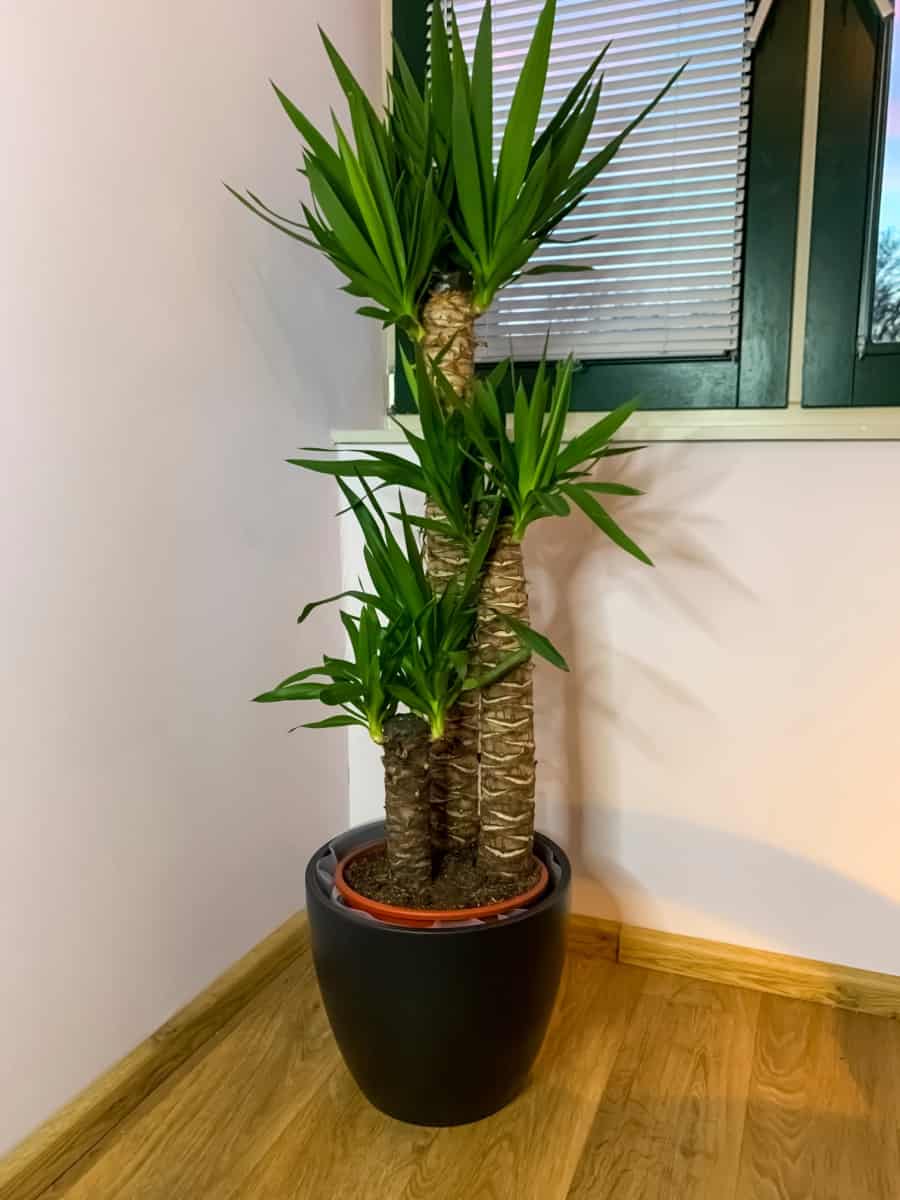
Lucky for you, the yucca is considered drought-tolerant. Put it in a spot that receives bright, indirect sunlight.
Ensure that the soil is well-draining. Occasionally dust off the leaves to keep them healthy.
7. Money Tree
Money trees, also known as good luck trees, have a very tropical feel to them. Their foliage is almost palm-like in appearance and very vibrant.
The trunk can be braided, adding to its overall unique aesthetic.
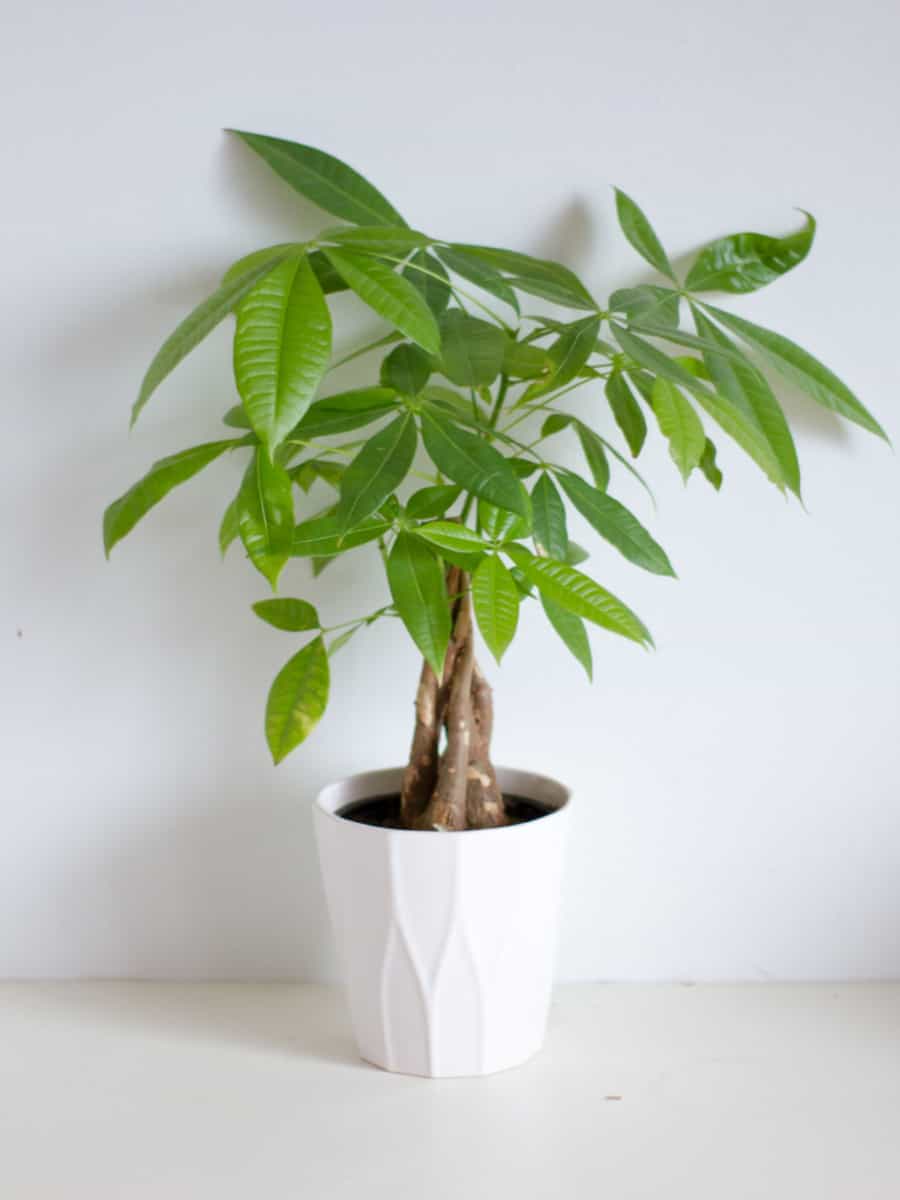
They can reach 6 feet in height when grown indoors. Its botanical name is Pachira aquatica.
Bright indirect sunlight is ideal for the money tree. When you water it, rotate it so that it gets even sunlight and in turn grows evenly.
Deep but infrequent watering is the way to go. The soil's top few inches should dry before the next watering cycle. Regularly mist the leaves to simulate humidity.
Tell your guests you do have money that grows on trees! This tree's interesting aesthetic goes a long way in boosting your home's decor.
8. Madagascar Dragon Tree
Talk about a stunning indoor plant! You'll love this tree's intriguing appearance. It grows tall and slender, sprouting at the top with a crown of thin, wispy blade foliage.
Madagascar Dragon Tree leaves are long and narrow, ranging in color depending on the variety.
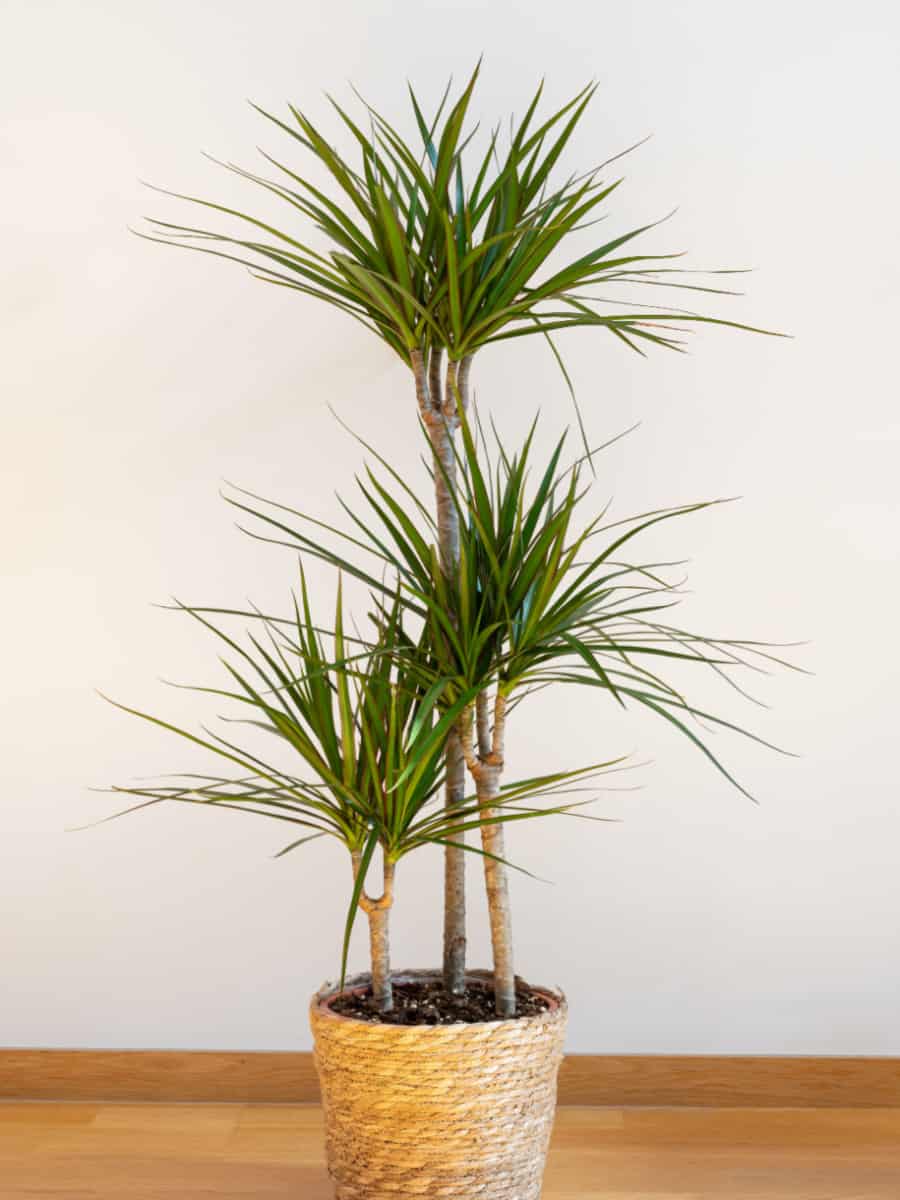
They can be vibrant green with bands of magenta, yellow, and/or white. Its botanical name is Dracaena marginata.
Position the tree in a spot with light shade. If it gets too much sunlight, it could scorch. Keep the soil moist, but not soggy.
Allow the top few inches of soil to dry out between waterings. From time to time, you should mist the plant to give it some humidity.
9. Parlor Palm
Parlor palms are the very definition of what you'd expect in a tropical plant. It grows in clusters of thin trunks that reach between 3 and 6 feet in height at maturity.
The trunks produce long, thin, graceful palm fronds. Its botanical name is Chamaedora elegant.

Find a spot that receives low light, shade, or bright filtered light. Direct light could cause the plant to scorch.
The soil should be well-draining yet moist and loamy. Feed it with a balanced fertilizer (10-10-10) once a month for optimal health.
If you absolutely love palm trees, consider bringing this one into your space. Its beautiful foliage adds nice texture.
10. Norfolk Island Pine
The Norfolk Island Pine, Araucaria heterophylla, is a symmetrical and evergreen indoor tree with tiered branches, resembling a perfectly proportioned miniature Christmas tree adorned with feathery, emerald-green foliage.
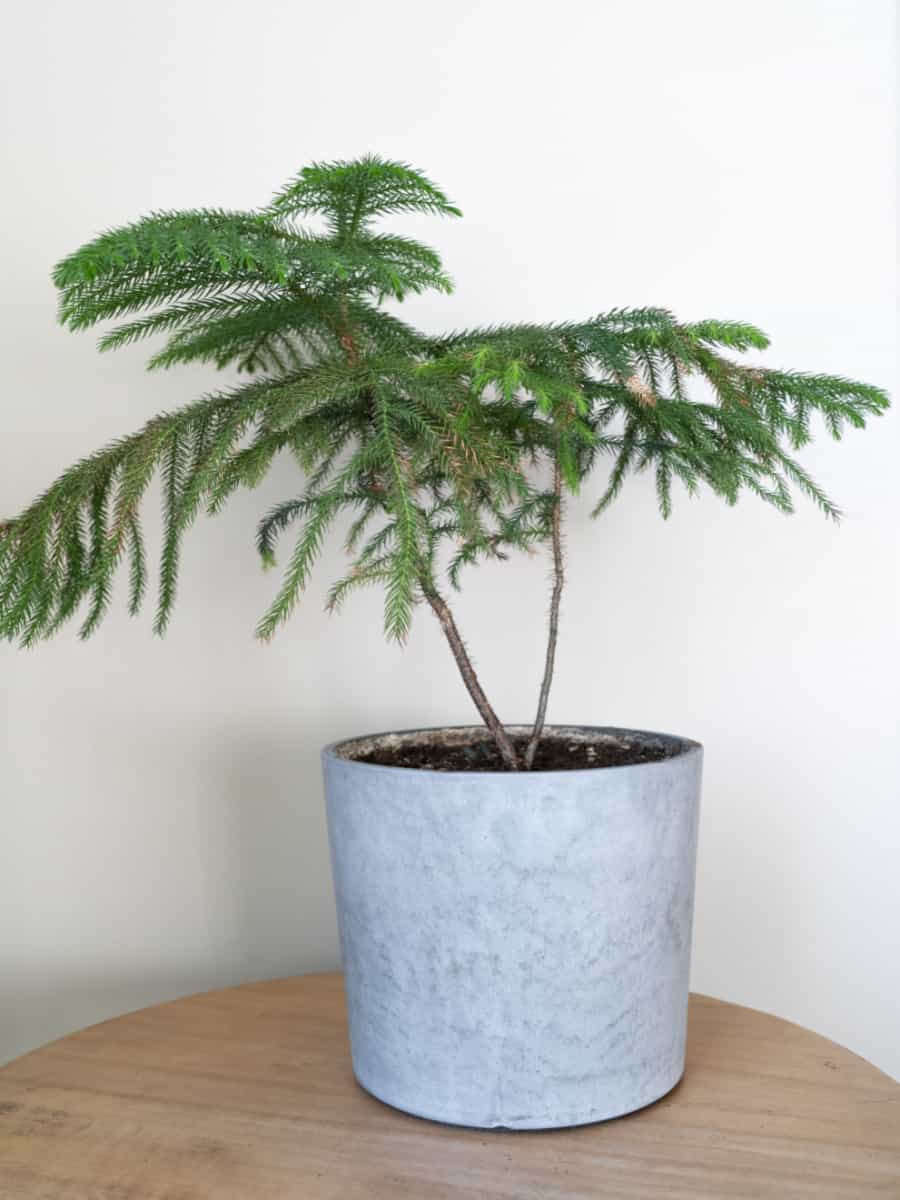
Norfolk Island Pines thrive in bright, indirect light. Place your tree near a window with filtered sunlight. It can tolerate some direct morning sunlight but should be protected from strong afternoon sun.
Plant your Norfolk Island Pine in well-draining potting soil. Keep the soil evenly moist, but not soggy.
Repot your Norfolk Island Pine into a slightly larger container when it becomes root-bound or outgrows its current pot. This is typically done every 2-3 years in the spring.
11. Umbrella Tree
Umbrella trees are a very low-maintenance plant variety. Their foliage grows in circular groups of 5 to 9 leaves, its shape attributing to its name.
The leaves are long, ovate, and pointy at the tip. Some varieties have variegated leaf colors while others are solid green.
Depending on the variety, the tree can reach between 4 and 8 feet in height. Its botanical name is Schefflera.

Position the plant in a spot that receives plenty of bright, slightly indirect sunlight. Ensure that the soil is kept moist, but not wet.
Water it when the top inch or so of soil has dried out. Any well-draining soil will be just fine. Feed it with a well-balanced fertilizer every so often.
Not only do you get to enjoy the look of your houseplants, but you also get to be a part of the rewarding experience of watching it grow in your home.
Be sure to check out these other great garden guides:

This article makes for good reading
It makes me hopeful as I struggle with my plants